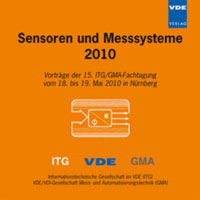3D-Localization of Low-Power Wireless Sensor Nodes Based on AMR-Sensors in Industrial and AmI Applications
Conference: Sensoren und Messsysteme 2010 - 15. ITG/GMA-Fachtagung
05/18/2010 - 05/19/2010 at Nürnberg
Proceedings: Sensoren und Messsysteme 2010
Pages: 8Language: englishTyp: PDF
Personal VDE Members are entitled to a 10% discount on this title
Authors:
Carrella, Stefano; Iswandy, Kuncup; Lutz, Kai; König, Andreas (Institute of Integrated Sensor Systems, University of Kaiserslautern, Germany)
Abstract:
In the last decade, wireless sensor networks (WSN) have gathered a lot of attention as an important research domain and have been deployed in many applications, e.g., navigation, military, ambient intelligence, medical, and industrial tasks. Context-based processing and services, in particular location-context, are of key interest here. A plethora of technologies for localization in WSN, e.g., based on RF, light/IR, ultrasonic, have been developed. However, physical constraints of the application environment and each localization technology lead to different aptness. For instance, the attenuation of RF hinders localization via radio and media opaqueness via optical means. To provide localization method for some currently not amenable challenging applications, especially in industrial processes and AmI, a concept for localization with magnetic fields has been developed and implemented. In the proposed concept based on anisotropic magnetoresistive (AMR) sensors integrated in the wireless sensor nodes, the localization is achieved by detecting fields emitted by an appropriate coils arrangement in the industrial scenario. A first prototype has been designed with a wired and a wireless version of the tri-axial AMR-sensor. In a cubic volume of 150 cm side length, an average localization error of less than 5 cm has been achieved in air as well as liquid filled container. As stringent power constraints have to be met in WSN, a sensor node design must achieve localization at low power consumption. Based on an analysis of existing commercial components, the node power consumption presented has been analysed and a case study for optimised minimum power design based on reconfigurable sensor electronics has been elaborated.


